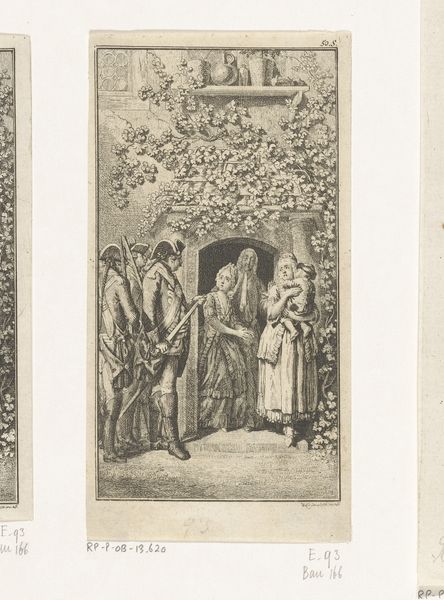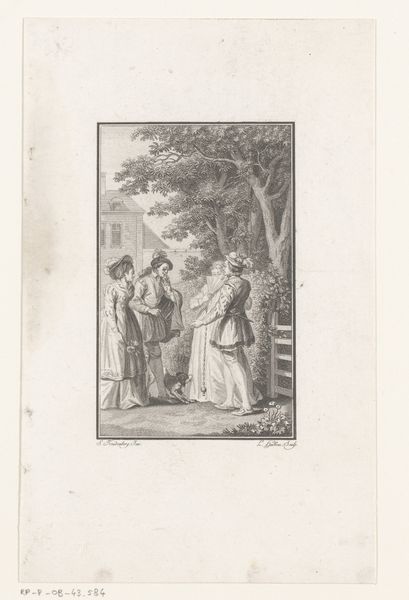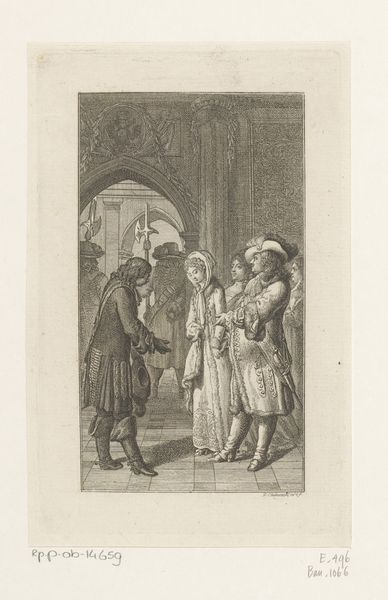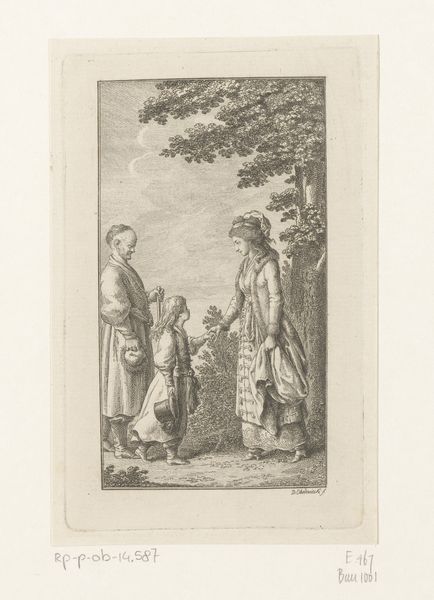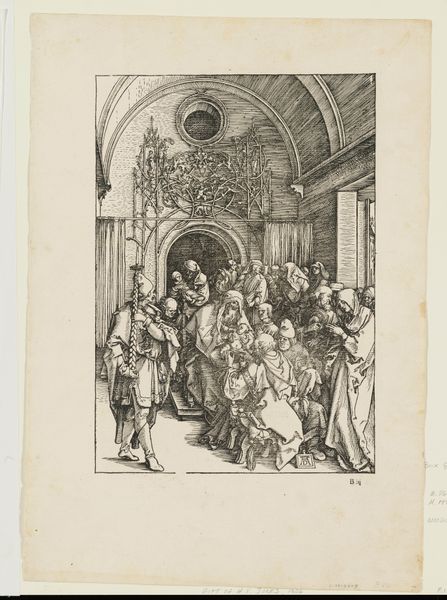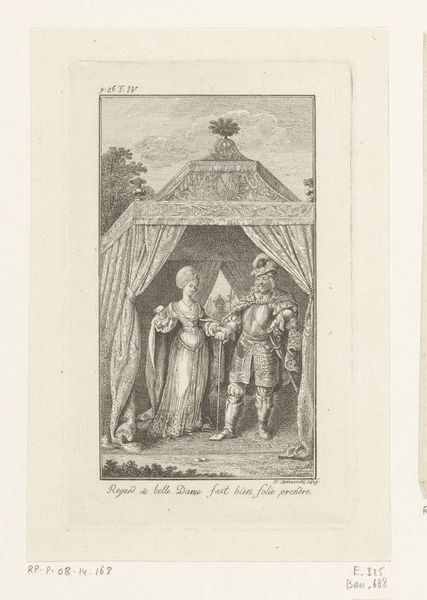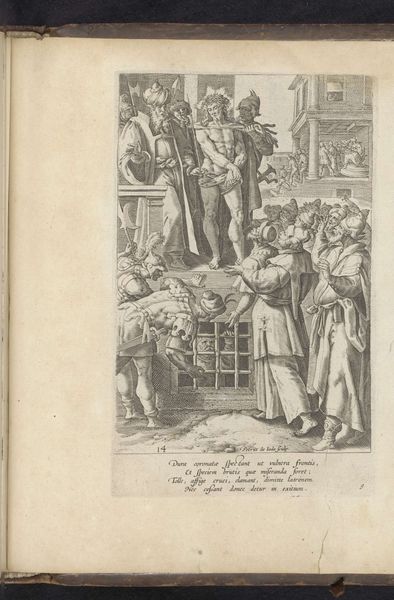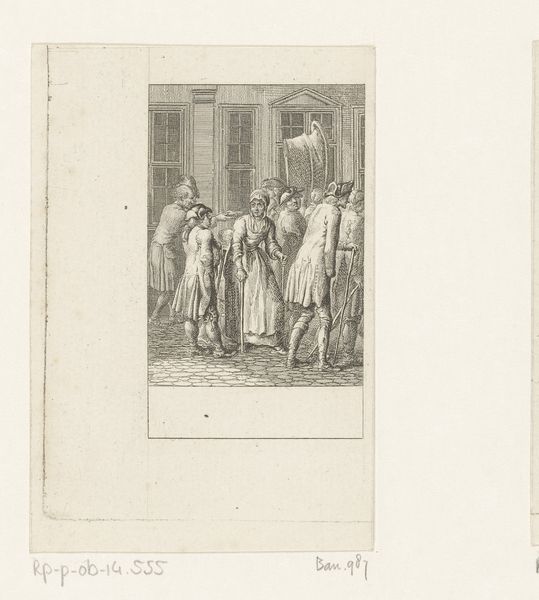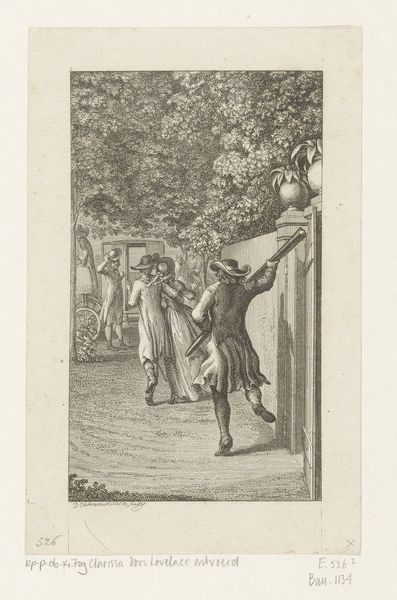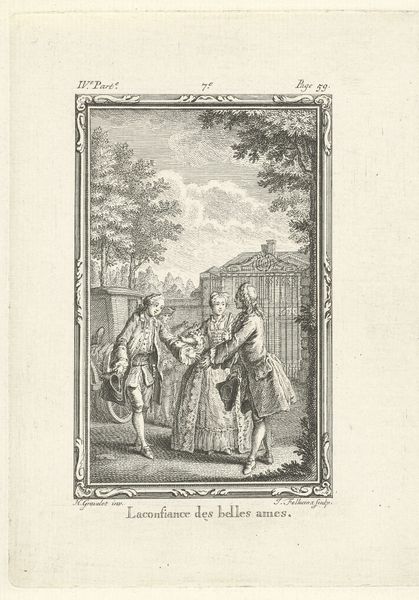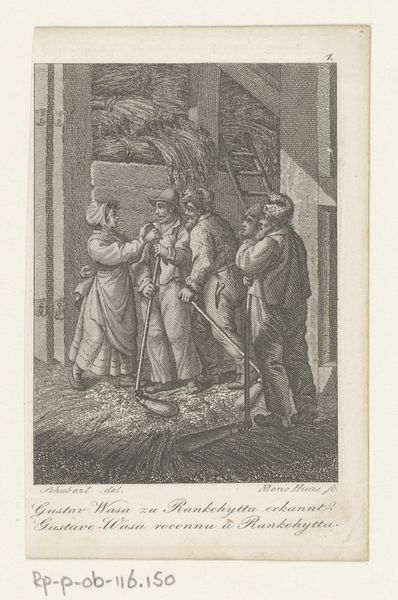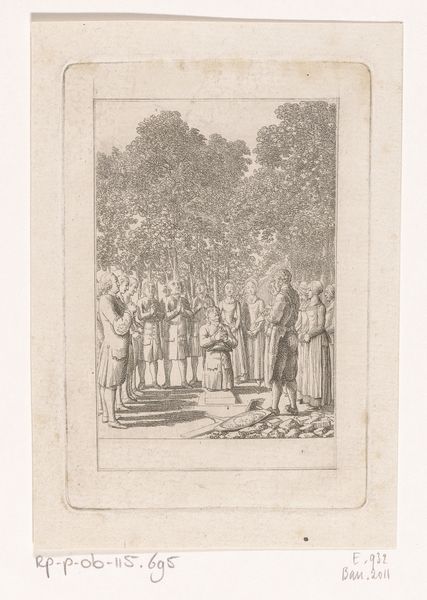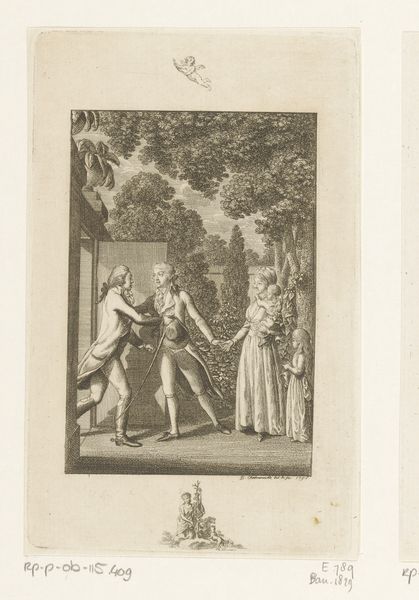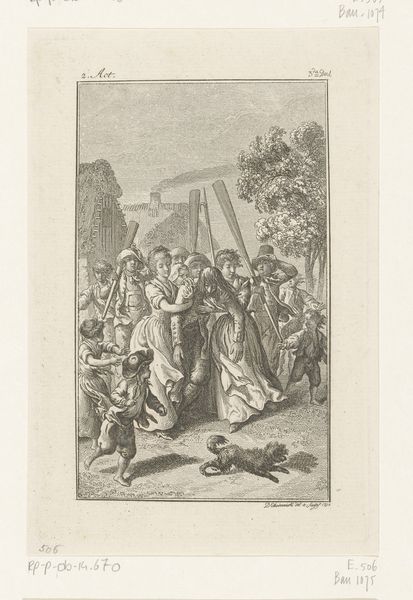
Dimensions: height 132 mm, width 76 mm
Copyright: Rijks Museum: Open Domain
Curator: Oh, it's heartbreaking isn't it? This is Daniel Nikolaus Chodowiecki's 1773 engraving, "Familie Nothanker uit huis gezet" which translates to "The Nothanker Family Evicted". It resides here at the Rijksmuseum. The title alone, without even seeing the artwork, gives you a fairly accurate impression. Editor: Absolutely devastating. The scene just radiates despair. There's a tangible weight in those fine lines, a profound sadness clinging to the figures as they're cast out. It's that moment of realization hitting them all at once. Curator: Exactly, there's a brutal honesty to it. The artist masterfully conveys the family's plight using sharp contrasts and meticulous detail. What's striking to me is the use of light, particularly how it illuminates their faces, etching their distress onto our minds. But tell me more from an activist perspective. Editor: The piece exposes the vulnerabilities of a family against state power. Consider the presence of the soldiers versus the disheveled appearance and huddled posture of the Nothankers. Chodowiecki isn't just showing us an eviction; he's offering a pointed critique of social injustice. How economic policies and societal structures often conspire to marginalize and dispossess. We're invited to contemplate the ethics of authority and our responsibility toward the disenfranchised. Curator: And those tendrils of vines growing over the doorway—it's as if nature itself weeps for their loss, framing their sorrow in an almost melancholic embrace. The objects casually placed on the shelf above speak to lives once lived comfortably, amplifying their sudden fall from grace. Editor: I see it slightly differently; I interpret those details as signifiers of what the family is leaving behind—roots severed. Those homely elements, now out of reach, intensify the impact of displacement, transforming what might be seen as an anecdotal moment into an allegory of broader systemic issues. Curator: Right, the engraving becomes an archive. An index of human experience preserved through ink and paper. It really highlights our shared experiences of love and loss. A window into history, wouldn’t you agree? Editor: It urges us to connect these historical narratives with contemporary realities. By considering forced displacement across time, it challenges us to confront issues of inequality, power, and resilience that remain profoundly relevant today. Curator: Beautifully said, it's a haunting work that transcends time. Editor: Indeed. Art as an agent for change; let’s make it happen.
Comments
No comments
Be the first to comment and join the conversation on the ultimate creative platform.
